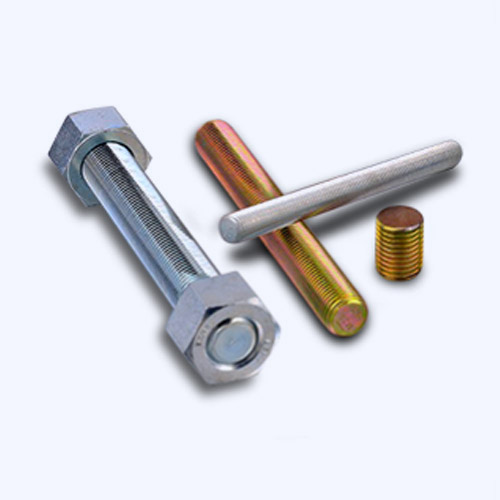

Understanding Metric Flange Nuts and Their Applications in Fastening Solutions
Dec . 06, 2024 14:04 Back to list
Understanding Metric Flange Nuts and Their Applications in Fastening Solutions
Understanding Metric Flange Nuts Features and Applications
Metric flange nuts are essential components in various mechanical assembly applications, known for their unique design and versatile functionality. Unlike standard nuts, flange nuts feature an integrated flange at the bottom, which serves multiple purposes. This article delves into the characteristics, advantages, and applications of metric flange nuts, emphasizing their importance in modern engineering and construction.
What are Metric Flange Nuts?
Metric flange nuts adhere to the metric system of measurement, which is widely used internationally, especially in Europe and Asia. These nuts are available in various sizes and grades, enabling engineers and designers to choose the right specifications for their projects. The distinguishing feature of flange nuts is the circular flange that is part of the nut's base, which acts similarly to a washer. This flange provides additional surface area that helps distribute the load more evenly across the workpiece surface.
Key Features
1. Flange Design The flange of the nut reduces the likelihood of loosening due to vibration or thermal cycling. It also eliminates the need for a separate washer, saving both time and material during installation.
2. Material Composition Metric flange nuts are typically manufactured from various materials, including steel, stainless steel, and nylon. The choice of material largely depends on the working environment, including exposure to moisture, chemicals, and high temperatures.
3. Grade Specifications Like conventional nuts, flange nuts come with grade specifications that indicate their strength and durability. Common grades include 8, 10, and 12, with higher numbers signifying greater tensile strength.
4. Thread Types Metric flange nuts are available in different thread types, including coarse (ISO coarseness) and fine pitches. The selection of thread type affects the nut's grip on the bolt and overall assembly performance.
5. Finish Options To enhance corrosion resistance and aesthetic appeal, flange nuts can be finished with various coatings such as zinc plating, black oxide, or galvanization. This is particularly important for applications exposed to harsh environments.
Advantages of Using Flange Nuts
metric flange nuts

One of the primary advantages of using metric flange nuts is their ability to prevent loosening during operation. The flange design helps absorb shock loads and vibrations that can cause standard nuts to work loose over time. The wider surface area of the flange also mitigates potential for damage to the substrate, providing a secure fit.
Additionally, since flange nuts do not require washers, they can lead to faster assembly times and reduce the number of components needed in an assembly. This simplification can streamline the manufacturing process and minimize the risk of losing parts during assembly.
Applications of Metric Flange Nuts
Metric flange nuts are utilized across a variety of industries
1. Automotive In the automotive industry, these nuts are used extensively in chassis, engine components, and suspension systems, where vibration resistance and secure fastening are critical.
2. Construction Flange nuts are common in structural applications, particularly in steel fabrication and bridge construction, where strong, reliable connections are needed.
3. Electronics In electronic devices, these nuts secure components together, ensuring durability and stability in compact spaces.
4. Machinery Machine assemblies often rely on flange nuts for securing parts that undergo considerable stress, ensuring long-term performance and safety.
5. Furniture In the manufacturing of furniture, flange nuts assist in assembling components, allowing for adjustable and robust joints.
Conclusion
Metric flange nuts play a significant role in providing durable and robust fastening solutions across multiple industries. Their unique design offers advantages that go beyond traditional fastening methods, enhancing assembly efficiency and system reliability. As technology advances and industries continue to evolve, flange nuts will remain a critical component in the assembly process, ensuring that machinery, vehicles, and structures maintain their integrity under various conditions. Selecting the right metric flange nut for the application at hand is crucial, and understanding their features will help in making informed decisions that lead to successful and safe outcomes.
Latest news
-
High-Strength Hot Dip Galvanized Bolts - Hebei Longze | Corrosion Resistance, Customization
NewsJul.30,2025
-
Hot Dip Galvanized Bolts-Hebei Longze|Corrosion Resistance&High Strength
NewsJul.30,2025
-
High-Strength Hot-Dip Galvanized Bolts-Hebei Longze|Corrosion Resistance&High Strength
NewsJul.30,2025
-
Hot Dip Galvanized Bolts-Hebei Longze|Corrosion Resistance&High Strength
NewsJul.30,2025
-
Hot Dip Galvanized Bolts - Hebei Longze | Corrosion Resistance, High Strength
NewsJul.30,2025
-
High-Strength Hot Dip Galvanized Bolts-Hebei Longze|Corrosion Resistance, Grade 8.8
NewsJul.30,2025

